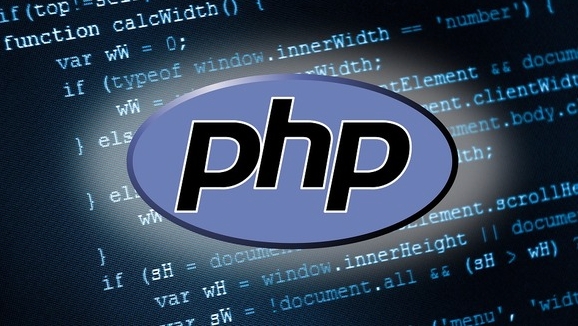Verify the validity of URLs. Regular expressions or built-in functions are commonly used in PHP. 1. Use regularity to flexibly match standard URLs, such as ^(?:https?://)?(?:[\da-z.-] ).(?:[az.-]{2,6})(?:[/\w.-])/?$ can identify addresses with protocols, domain names and paths; 2. If stricter verification is required, protocol headers and specification path characters can be mandatory; 3. It is recommended to use filter_var($url, FILTER_VALIDATE_URL) first, because it has good compatibility and supports complex situations such as IPv6, ports, and parameters, and the syntax is concise and reliable.

Verifying the effectiveness of URLs is a common requirement in PHP development, such as in form submission, data cleaning, or crawling projects. Verifying URLs with regular expressions (regex) is a direct and effective way, but it is not easy to write them accurately.

The most commonly used method in PHP is to combine filter_var() function and the FILTER_VALIDATE_URL filter. However, if you have more specific format requirements or want to understand the underlying implementation logic, it is also feasible to write a regex yourself.

Basic URL regular expressions
A common and standard rule that matches most standard URLs is as follows:
_^(https?:\/\/)?([\da-z\.-] )\.([az\.]{2,6})([\/\w \.-]*)*\/?$_Let’s explain the structure of this regularity:

-
^and$: indicates a complete match to avoid the situation where irrelevant characters are mixed in the middle. -
(https?:\/\/)?: Allow http or https, and the entire protocol part is optional. -
([\da-z\.-] ): Domain name body, containing letters, numbers, points and horizontal lines. -
\.([az\.]{2,6}): Top-level domain names, such as .com, .net, .co.uk, etc., with a length limit of 2~6 characters. -
([\/\w \.-]*)*\/?: The path part, supports multi-level directories, file names, spaces (actually recommended to filter spaces), special symbols, etc.
This expression can match addresses like http://example.com/path/to/page.php , example.com , and https://sub.domain.co.uk/ .
Stricter URL verification methods
If you want the URL to have a protocol (http/https) and the path cannot be too complicated, you can write it like this:
_^(https?:\/\/)([\da-z\.-] )\.([az]{2,6})(\/[\w\.-]*)*\/?$_Change points:
- Removed the protocol
?, forced to bringhttp://orhttps:// - The path part does not allow spaces or other special characters, only basic characters
/,.,-, letters and numbers
This writing method is more suitable for user input verification to prevent some irregular URLs from being mixed into the system.
Examples for using PHP
You can use preg_match() to match:
$url = "https://example.com/path/to/page";
$pattern = '/^(https?:\/\/)([\da-z\.-] )\.([az]{2,6})(\/[\w\.-]*)*\/?$/i';
if (preg_match($pattern, $url)) {
echo "URL is in correct format";
} else {
echo "URL is illegal";
}A few things to note:
- Adding the
imodifier can make the domain name case insensitive (for example, allowExample.Com) - If you accept local development environments such as
localhost, you can add\b(localhost)\bas an exception to the domain name part - If you want to allow query parameters (such as
?id=123), you need to extend the path part and add support for?and&
Other methods: filter_var() is simpler
Although regularity is flexible, it is recommended to use PHP built-in functions in most cases:
if (filter_var($url, FILTER_VALIDATE_URL)) {
echo "valid URL";
}It has handled various edge cases internally, such as IPv6 addresses, port numbers, query parameters, etc., and the syntax is clear and error-prone.
In general, it is feasible to verify the URL with regularity, but pay attention to details, such as whether the protocol is optional, whether the path allows special characters, whether the top-level domain length is required, etc. If you don't pursue complete customization, it's easier to prioritize built-in functions.
The above is the detailed content of php regex for url validation. For more information, please follow other related articles on the PHP Chinese website!

Hot AI Tools

Undress AI Tool
Undress images for free

Undresser.AI Undress
AI-powered app for creating realistic nude photos

AI Clothes Remover
Online AI tool for removing clothes from photos.

Clothoff.io
AI clothes remover

Video Face Swap
Swap faces in any video effortlessly with our completely free AI face swap tool!

Hot Article

Hot Tools

Notepad++7.3.1
Easy-to-use and free code editor

SublimeText3 Chinese version
Chinese version, very easy to use

Zend Studio 13.0.1
Powerful PHP integrated development environment

Dreamweaver CS6
Visual web development tools

SublimeText3 Mac version
God-level code editing software (SublimeText3)

Hot Topics
 How do I implement authentication and authorization in PHP?
Jun 20, 2025 am 01:03 AM
How do I implement authentication and authorization in PHP?
Jun 20, 2025 am 01:03 AM
TosecurelyhandleauthenticationandauthorizationinPHP,followthesesteps:1.Alwayshashpasswordswithpassword_hash()andverifyusingpassword_verify(),usepreparedstatementstopreventSQLinjection,andstoreuserdatain$_SESSIONafterlogin.2.Implementrole-basedaccessc
 How can you handle file uploads securely in PHP?
Jun 19, 2025 am 01:05 AM
How can you handle file uploads securely in PHP?
Jun 19, 2025 am 01:05 AM
To safely handle file uploads in PHP, the core is to verify file types, rename files, and restrict permissions. 1. Use finfo_file() to check the real MIME type, and only specific types such as image/jpeg are allowed; 2. Use uniqid() to generate random file names and store them in non-Web root directory; 3. Limit file size through php.ini and HTML forms, and set directory permissions to 0755; 4. Use ClamAV to scan malware to enhance security. These steps effectively prevent security vulnerabilities and ensure that the file upload process is safe and reliable.
 What are the differences between == (loose comparison) and === (strict comparison) in PHP?
Jun 19, 2025 am 01:07 AM
What are the differences between == (loose comparison) and === (strict comparison) in PHP?
Jun 19, 2025 am 01:07 AM
In PHP, the main difference between == and == is the strictness of type checking. ==Type conversion will be performed before comparison, for example, 5=="5" returns true, and ===Request that the value and type are the same before true will be returned, for example, 5==="5" returns false. In usage scenarios, === is more secure and should be used first, and == is only used when type conversion is required.
 How do I perform arithmetic operations in PHP ( , -, *, /, %)?
Jun 19, 2025 pm 05:13 PM
How do I perform arithmetic operations in PHP ( , -, *, /, %)?
Jun 19, 2025 pm 05:13 PM
The methods of using basic mathematical operations in PHP are as follows: 1. Addition signs support integers and floating-point numbers, and can also be used for variables. String numbers will be automatically converted but not recommended to dependencies; 2. Subtraction signs use - signs, variables are the same, and type conversion is also applicable; 3. Multiplication signs use * signs, which are suitable for numbers and similar strings; 4. Division uses / signs, which need to avoid dividing by zero, and note that the result may be floating-point numbers; 5. Taking the modulus signs can be used to judge odd and even numbers, and when processing negative numbers, the remainder signs are consistent with the dividend. The key to using these operators correctly is to ensure that the data types are clear and the boundary situation is handled well.
 How can you interact with NoSQL databases (e.g., MongoDB, Redis) from PHP?
Jun 19, 2025 am 01:07 AM
How can you interact with NoSQL databases (e.g., MongoDB, Redis) from PHP?
Jun 19, 2025 am 01:07 AM
Yes, PHP can interact with NoSQL databases like MongoDB and Redis through specific extensions or libraries. First, use the MongoDBPHP driver (installed through PECL or Composer) to create client instances and operate databases and collections, supporting insertion, query, aggregation and other operations; second, use the Predis library or phpredis extension to connect to Redis, perform key-value settings and acquisitions, and recommend phpredis for high-performance scenarios, while Predis is convenient for rapid deployment; both are suitable for production environments and are well-documented.
 How do I stay up-to-date with the latest PHP developments and best practices?
Jun 23, 2025 am 12:56 AM
How do I stay up-to-date with the latest PHP developments and best practices?
Jun 23, 2025 am 12:56 AM
TostaycurrentwithPHPdevelopmentsandbestpractices,followkeynewssourceslikePHP.netandPHPWeekly,engagewithcommunitiesonforumsandconferences,keeptoolingupdatedandgraduallyadoptnewfeatures,andreadorcontributetoopensourceprojects.First,followreliablesource
 What is PHP, and why is it used for web development?
Jun 23, 2025 am 12:55 AM
What is PHP, and why is it used for web development?
Jun 23, 2025 am 12:55 AM
PHPbecamepopularforwebdevelopmentduetoitseaseoflearning,seamlessintegrationwithHTML,widespreadhostingsupport,andalargeecosystemincludingframeworkslikeLaravelandCMSplatformslikeWordPress.Itexcelsinhandlingformsubmissions,managingusersessions,interacti
 How to set PHP time zone?
Jun 25, 2025 am 01:00 AM
How to set PHP time zone?
Jun 25, 2025 am 01:00 AM
TosettherighttimezoneinPHP,usedate_default_timezone_set()functionatthestartofyourscriptwithavalididentifiersuchas'America/New_York'.1.Usedate_default_timezone_set()beforeanydate/timefunctions.2.Alternatively,configurethephp.inifilebysettingdate.timez






